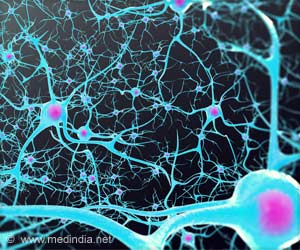“At present, diagnosing Alzheimer’s disease requires neuroimaging,” said senior author Thomas Karikari, Ph.D., assistant professor of psychiatry at Pitt. “Those tests are expensive and take a long time to schedule, and a lot of patients, even in the U.S., don’t have access to MRI and PET scanners. Accessibility is a major issue.”
Clinicians currently utilize guidelines established in 2011 by the National Institute on Aging and the Alzheimer’s Association to diagnose Alzheimer’s disease. The AT(N) Framework requires the detection of three separate components of Alzheimer’s pathology- the presence of amyloid plaques, tau tangles, and neurodegeneration in the brain- via imaging or CSF analysis.
Advertisement
Unfortunately, both procedures have economic and practical limits, necessitating the development of simple and reliable AT(N) biomarkers in blood samples, the collection of which is minimally intrusive and takes fewer resources. The development of basic techniques for diagnosing Alzheimer’s disease in the blood without sacrificing quality, according to Karikari, is a crucial step toward greater accessibility.
“The most important utility of blood biomarkers is to make people’s lives better and to improve clinical confidence and risk prediction in Alzheimer’s disease diagnosis,” Karikari said.
Limitations of Currently Available Alzheimer’s Disease Detection Tests
Current blood testing methods can detect anomalies in plasma amyloid beta and the phosphorylated form of tau, meeting two of the three criteria for confidently diagnosing Alzheimer’s disease. The most difficult challenge in applying the AT(N) Framework to blood samples is discovering neurodegenerative markers that are particular to the brain and aren’t impacted by potentially deceptive pollutants produced elsewhere in the body.
For example, blood levels of neurofilament light, a protein marker of nerve cell destruction, rise in Alzheimer’s disease, Parkinson’s disease, and other dementias, making it less effective in distinguishing Alzheimer’s from other neurodegenerative illnesses. Detecting total tau in the blood, on the other hand, was found to be less instructive than monitoring its levels in the CSF.
Karikari and his team, which included scientists from the University of Gothenburg in Sweden, developed a technique to detect BD-tau while avoiding free-floating ‘big tau’ proteins produced by cells outside the brain by applying their knowledge of molecular biology and biochemistry of tau proteins in different tissues, such as the brain.
Monitoring BD-tau Blood Levels for Diagnosing Alzheimer’s Disease
To accomplish this, scientists created a unique antibody that attaches to BD-tau preferentially, making it easily detectable in the blood. They validated their assay on over 600 patient samples from five separate cohorts, including those from patients whose Alzheimer’s disease diagnosis was confirmed after their deaths, as well as those from patients with early-stage Alzheimer’s.
The experiments revealed that levels of BD-tau found in Alzheimer’s disease patients’ blood samples using the novel assay corresponded with levels of tau in the CSF and reliably separated Alzheimer’s from other neurodegenerative disorders. BD-tau levels were also found to be associated with the degree of amyloid plaques and tau tangles in brain tissue, as validated by autopsy analysis.
Scientists expect that monitoring BD-tau blood levels will enhance the clinical trial design and enable the screening and recruitment of patients from populations that have traditionally been excluded from research cohorts.
“There is a huge need for diversity in clinical research, not just by skin color but also by socioeconomic background,” said Karikari. “To develop better drugs, trials need to enroll people from varied backgrounds and not just those who live close to academic medical centers. A blood test is cheaper, safer, and easier to administer, and it can improve clinical confidence in diagnosing Alzheimer’s and selecting participants for clinical trial and disease monitoring.”
Karikari and his colleagues intend to conduct large-scale clinical validation of blood BD-tau in a variety of research organizations, including those that recruit people from varied racial and ethnic backgrounds, memory clinics, and the public. Furthermore, these trials will involve both older persons who have no biological indications of Alzheimer’s disease and those who are in various stages of the condition. These efforts will pave the road for BD-tau to be commercially available for widespread clinical and prognostic usage, ensuring that the biomarker results are generalizable to persons of all backgrounds.
Source: Medindia



